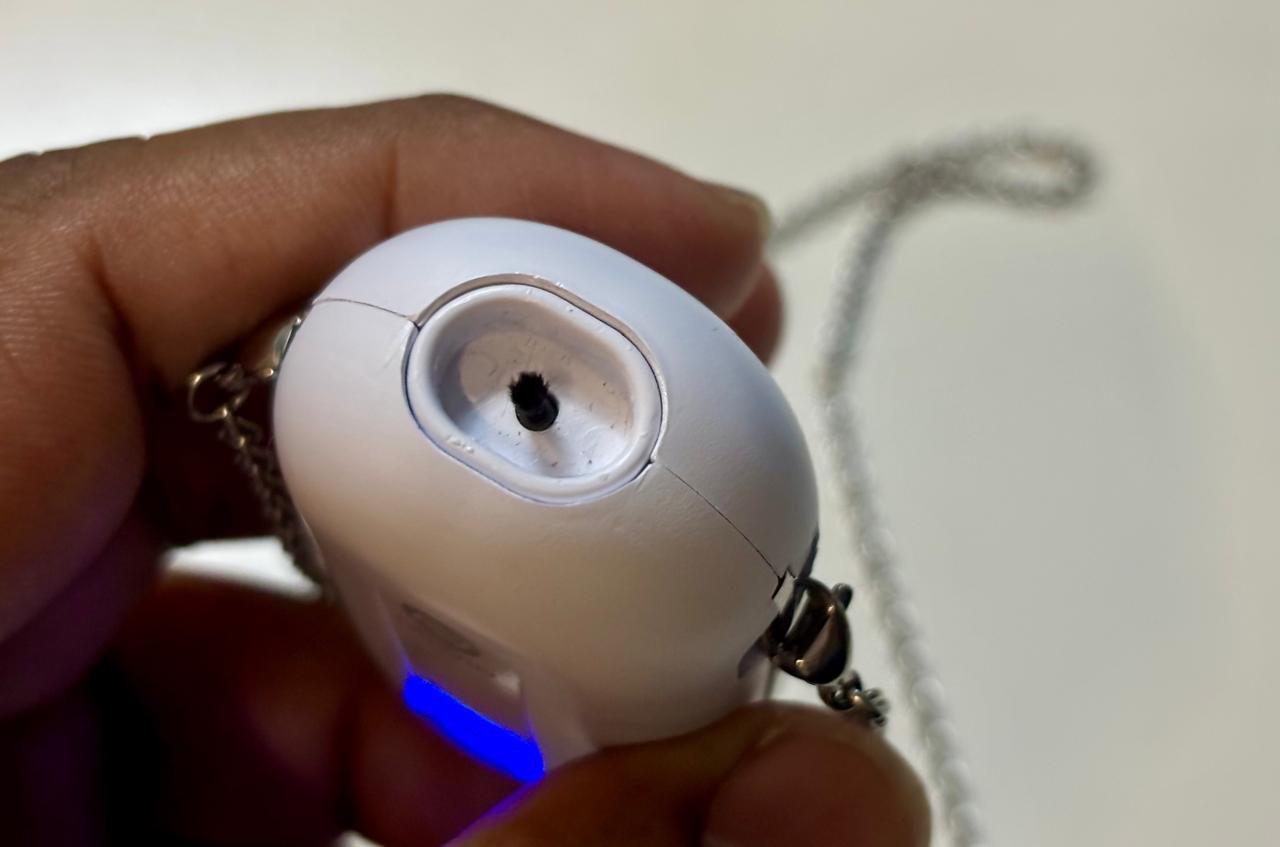In a world where air pollution affects our daily lives, traditional air purifiers often seem outdated and bulky, only effective in one room. Enter the Atovio Pebble, a compact wearable air purifier designed to transform personal air quality. This innovative device utilizes advanced anion technology to release millions of negatively charged ions that neutralize pollutants such as PM2.5, bacteria, and viruses in your immediate surroundings.
With the recent Diwali 2025 festivities leaving behind a haze of firecracker smoke and pollution in cities like Mumbai, Delhi, and Bangalore, the need for clean air has become urgent. The Atovio Pebble claims to be the perfect solution for those seeking to breathe easier amid poor air quality. We tested the Atovio Pebble. Could this be the game-changer we’ve been waiting for? Let’s find out.
Design
At first glance, the Atovio Pebble lives up to its name, it’s a smooth, oval-shaped pendant no larger than a large pebble, measuring about 6cm in height and weighing a featherlight 30 grams. Made up of matte plastic to resist fingerprints and scratches, it gives a minimalist vibe that’s more jewelry than gadget. A subtle chrome strip bisects the body, serving both aesthetic and functional purposes by anchoring the lanyard ends and completing the electrical circuit needed for operation. The front sports the Atovio logo and a multifunctional LED ring that pulses in soft blues and greens, means solid blue for normal mode, flashing for low battery, and a vibrant turbo glow when pollution demands extra firepower.
The real ingenuity lies in its wearability, it’s designed to dangle at chest level via a conductive lanyard, creating a personal purification bubble about 1-2 feet in radius around your face. No dangling chains here; it’s more like a high-tech necklace than a clunky accessory.
Performance
Powered by Atovio’s patent-pending Advanced Variable Anion Technology, the Pebble takes a unique approach to air purification. Instead of filtering air through barriers, it actively combats pollutants. With a simple press of a button, you can activate the device. In normal mode, it releases a steady stream of anions of up to 10 million per second that attach to positively charged pollutants, making them too heavy to remain airborne and causing them to settle out of your breathing path. Turbo mode is designed for more severe air quality scenarios (AQI > 200), such as post-Diwali smog.

In controlled tests conducted at IIT Kanpur’s National Aerosol Facility, the Pebble demonstrated a 90% reduction in PM2.5, PM10, smoke particles, and airborne microbes within 8 minutes, escalating to 99.9% over 60 minutes. In real-world outdoor conditions, efficiency may drop to 40-50% due to wind dispersion, but it still provides a meaningful protective shield in your immediate vicinity.
I put the Pebble to the test in specific scenarios. During a smoke test, where I puffed a cigarette into a sealed tumbler, the device cleared the haze in under a minute. While commuting to the office after Diwali, I noticed less throat irritation compared to days when I relied solely on a mask; the anion “cloud” seemed to deflect the harsh diesel fumes. Indoors, in a 10×10 foot room with burning incense, the air quality index (AQI) dropped from 150 to 85 within an hour, which was quicker than I expected for such a compact device. Additionally, it operates quietly, making it suitable for calls, sleep, or study sessions.
Battery performance is another highlight; Atovio claims 48 hours of use in normal mode and 20 hours in turbo mode. In real-world usage, I achieved around 4-5 days with 3-5 hours of daily use across mixed modes.
However, it’s important to note that the performance isn’t miraculous. In windy outdoor conditions, the anion field can disperse, reducing its effectiveness to a noticeable but not transformative impact (perhaps 30% less particulate inhalation). The Pebble is not a substitute for a full-room HEPA unit; it offers hyper-personal coverage, making it best suited for 1-2 people in close proximity.
In the context of India’s pollution crisis, where winter inversions trap Diwali smoke, the Pebble proves to be a valuable tool. While it won’t eliminate smog entirely, it can significantly reduce exposure by about half in personal spaces. For commuters, individuals with asthma, and urban parents, that level of protection is invaluable.
Verdict
The Atovio Pebble isn’t a cure-all, but an excellent product in addressing India’s air crisis. Priced under ₹3,200, it offers an affordable option for wearable wellness, significantly less expensive than competitors that rely on filters and come with ongoing costs. This device empowers users to clip it on simply, and you’re not just tolerating smog; you’re taking control of your breathing.


